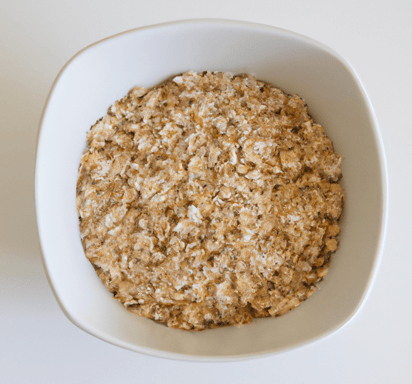Oatmeal: Important Facts, Health Benefits, and Recipes


Explore the health benefits, history, and versatile uses of oatmeal in our ultimate guide, and learn how to incorporate this nutritious superfood into your daily life.
What is Oatmeal?
Oatmeal is a popular breakfast food made from hulled oat grains, which are ground, steel-cut, or rolled. With its origins in ancient Europe, oatmeal has a mild, nutty flavor and a creamy texture when cooked. It's commonly used in porridge, baked goods, and as a binder in meatloaf or veggie burgers.
Is Oatmeal Healthy?
Yes, oatmeal is very healthy! Oatmeal boasts an impressive nutritional profile, rich in fiber, protein, vitamins, and minerals. It's low in calories and high in complex carbohydrates, making it a filling and energizing option for breakfast or snacks.
8 Health Benefits of Oatmeal
-
Supports heart health: Oatmeal's soluble fiber helps reduce cholesterol levels and lowers the risk of heart disease.
-
Aids digestion: The high fiber content in oatmeal promotes regular bowel movements and prevents constipation.
-
Regulates blood sugar: Oatmeal's low glycemic index helps maintain stable blood sugar levels, making it suitable for diabetics.
-
Boosts immune system: The beta-glucan in oatmeal supports the immune system by activating white blood cells.
-
Enhances skin health: Oats contain antioxidants and anti-inflammatory properties that help soothe and nourish the skin.
-
Supports weight loss: The fiber in oatmeal keeps you full longer, reducing the likelihood of overeating.
-
Increases energy levels: Oatmeal's complex carbohydrates provide a steady source of energy throughout the day.
-
Improves sleep quality: Oats are a natural source of melatonin, which helps regulate sleep patterns.
History and Background of Oatmeal
Oatmeal has been a staple food in Europe and the British Isles for thousands of years. Oats were used as cattle feed in Europe during the Bronze Age and were being cultivated by around 1,000 BC. The popularity of oats grew when the Romans introduced them to the British Isles, especially Scotland. The Celts also ate oats and enjoyed a simple oat cake. Today, Europe is the leader in oat production.
What is the Best Way to Store Oatmeal?
To preserve the freshness and quality of uncooked oatmeal, store it in an airtight container in a cool, dry place, away from direct sunlight. Properly stored oatmeal can last up to two years. Once oatmeal is cooked, you want to store in the refrigerator and eat within 1-2 days to maintain freshness.
What are the Different Types of Oatmeal?
There are several varieties of oatmeal, including:
- Steel-cut oats: minimally processed, retaining more nutrients and a chewier texture.
- Rolled oats: steamed and rolled flat, making them quicker to cook.
- Instant oats: pre-cooked and dehydrated, offering the fastest cooking time but less nutritional value.
What is the Best Substitute for Oatmeal if I Don't Have Any?
If you're out of oatmeal, consider using quinoa, barley, or bulgur as a nutritious alternative for porridge or grain-based recipes.
What Cuisines Use Oatmeal?
Oatmeal is featured in various cuisines, including British, Scottish, Irish, and American. It's often used in traditional dishes like porridge, oatcakes, and flapjacks.
How Does Oatmeal Help With Weight Loss?
Oatmeal's high fiber content keeps you full longer, reducing the likelihood of overeating and aiding in weight loss. Additionally, its low glycemic index helps maintain stable blood sugar levels, preventing cravings and energy crashes.
What are the Different Ways to Cook Oatmeal?
Oatmeal can be cooked or prepared in numerous ways, such as:
- Stovetop cooking
- Microwaving
- Overnight soaking
It can also be used in baking recipes, smoothies, and savory dishes like veggie burgers and meatloaf.
Is The Oatmeal Cooked In Overnight Oats?
No. Overnight oats are not cooked with heat but instead they are prepared using a cold method instead of the traditional stovetop cooking or microwaving. Overnight oats are made by combining rolled oats with a liquid, such as milk or yogurt, along with other desired ingredients, and then letting the mixture sit in the refrigerator overnight (or for several hours) to soften and absorb the liquid. During the overnight soaking process, the oats absorb the moisture from the liquid, resulting in a softened and creamy texture. This gives the oats a cooked-like consistency without the need for heat. The oats become more tender and easier to eat compared to eating them raw.

